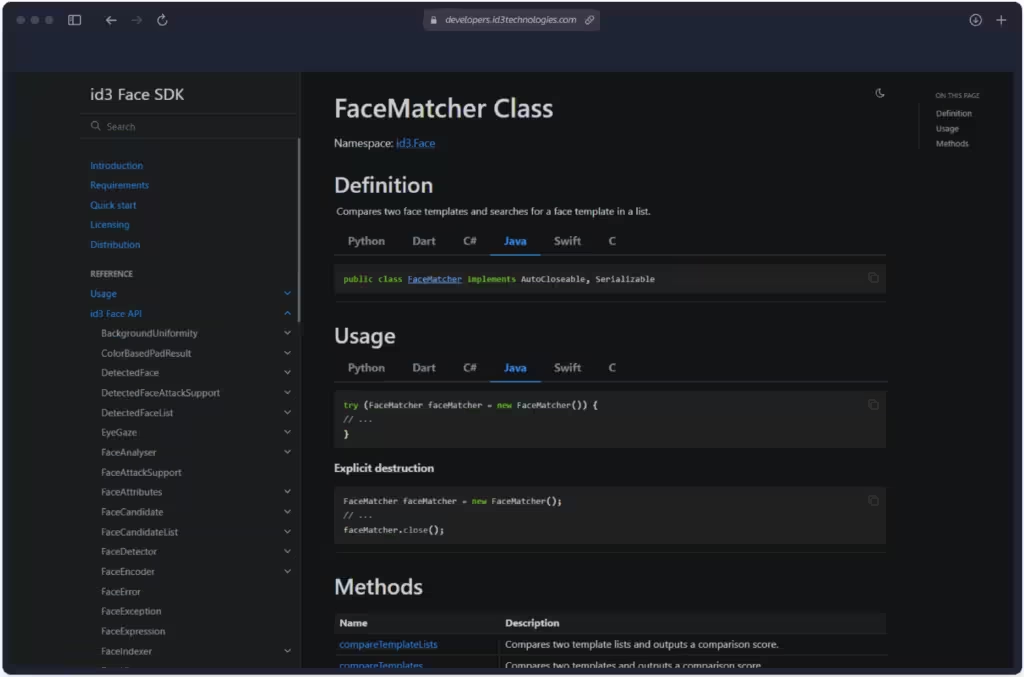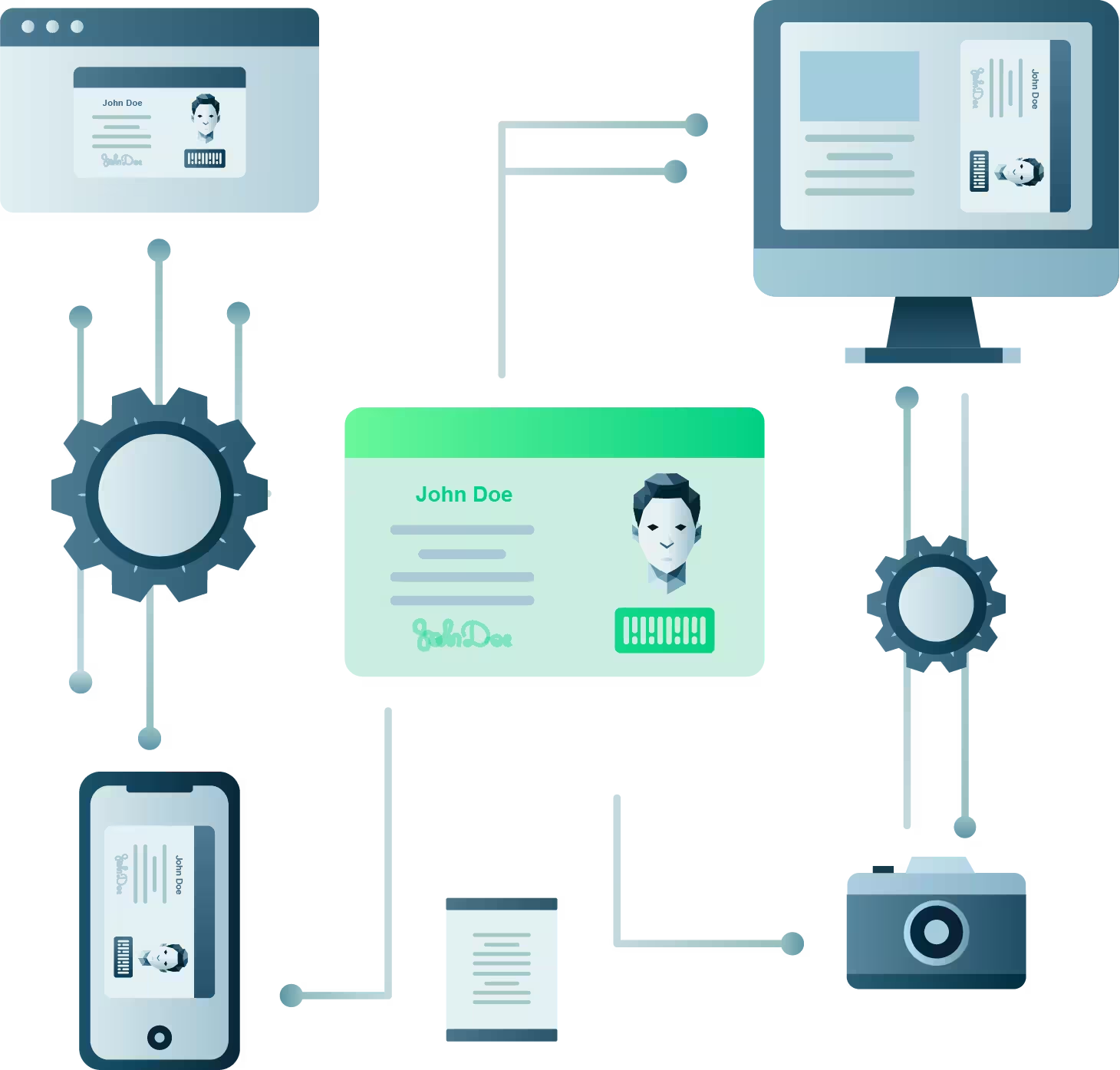Develop Your Document Verification Application With Our Tools.
The id3 Document SDK is a versatile cross-platform library for systems integrators seeking to promptly incorporate identity document verification technology into their products. This library is accessible as a Software Development Kit (SDK), providing a comprehensive interface that streamlines the integration of the library across servers, desktops/laptops, mobile devices, and edge devices.
Features included
Selfie capture
Takes a photo of their ID using a smartphone or webcam.
Liveness detection
Verify document authenticity by analysing embedded security elements, such as watermarks, holograms, and specific headers.
Biometric authentication
Advanced algorithms to quickly recognize the type and format of the document.
Document Capture
Takes a photo of their ID using a smartphone or webcam.
Automatic document identification
Advanced algorithms to quickly recognize the type and format of the document.
security elements check
Verify document authenticity by analysing embedded security elements, such as watermarks, holograms, and specific headers.
machine readable zone
Read and verify the information contained in the MRZ, ensuring an exact match with the document’s data.
Optical Character Recognition
Extract text from images or scanned documents and transforms it into a machine-readable format (Json, CSV…).
Autofill form fields
Extract the data to seamlessly populate sign-up forms.
Specifications
Identification.
Document type identification.
Document Type Identification helps detect forged or invalid documents. This technology utilizes artificial intelligence and machine learning to ascertain the presented document’s type and legitimacy by comparing it to a reference database of verified templates. Any document lacking proper formatting or layout can be singled out for further inspection. Document Type Identification can be performed using the document image from our extensive database, and it’s a straightforward and intuitive process. First, the user scans a document using their mobile device or captures it via the web. The scan is then evaluated, the document type is identified, and its key attributes are compared to corresponding template images. All in all, this process takes just a second, regardless of the identity document image submitted from any device, be it a mobile phone or laptop, using the id3 Document SDK.
MRZ.
MRZ Reading.
The Machine Readable Zone (MRZ) comprises either two or three lines of encoded information, typically located at the lower portion of an identification document. It is where crucial personal details of the document holder are encoded in a standardized format, allowing for swift machine-based reading and verification. The introduction of MRZ technology in the 1980s aimed to expedite ID verification processes at borders and airports. Thanks to its precision and speed, various organizations and services quickly adopted this technology. Today, machine-readable zones are a feature of various documents, collectively known as Machine Readable Travel Documents (MRTD).
OCR.
Optical Character Recognition.
Optical Character Recognition (OCR) is the technology that transforms typed or printed text into machine-readable data. Once this conversion is complete, the text can be easily edited, searched, displayed, or stored electronically. OCR has traditionally been employed for tasks such as data entry and the conversion of printed archival documents (such as bank statements and insurance records) into a digital format. Advanced OCR systems employ a variety of pre-processing techniques to reduce errors and enhance character recognition. The id3 Document SDK leverages pattern recognition, artificial intelligence, and computer vision, greatly expanding its capabilities and applications. Today, it has become a standard technology used across a wide range of industries.
Versatile Programming Interface.
Comprehensive API Across Multiple Languages.
The id3 Document SDK provides a versatile programming interface, offering a simple yet comprehensive API that supports a wide range of programming languages. This includes popular languages such as C, C++, C#, Dart, Java, Kotlin, Python, and Swift, enabling developers to integrate biometric functionalities seamlessly into diverse applications and platforms.
Cross-Platform Compatibility.
Support Across Major Operating Systems.
The id3 Document SDK is designed for cross-platform compatibility, supporting Windows, Linux, macOS, Android, and iOS operating systems. This ensures that developers can deploy biometric solutions across different environments with ease, providing flexibility and scalability for diverse deployment scenarios.

Developer documentation.
We provide comprehensive documentation and developer guides to facilitate a smooth implementation process of our Face sdk.

